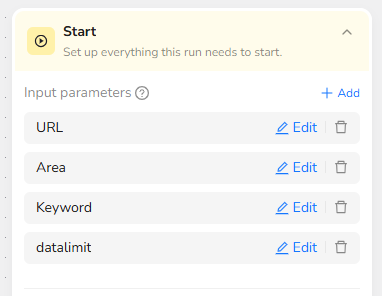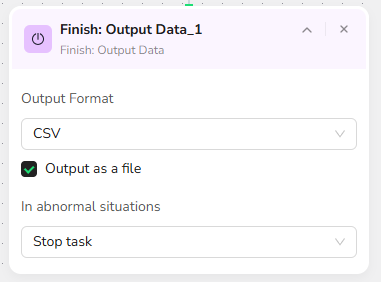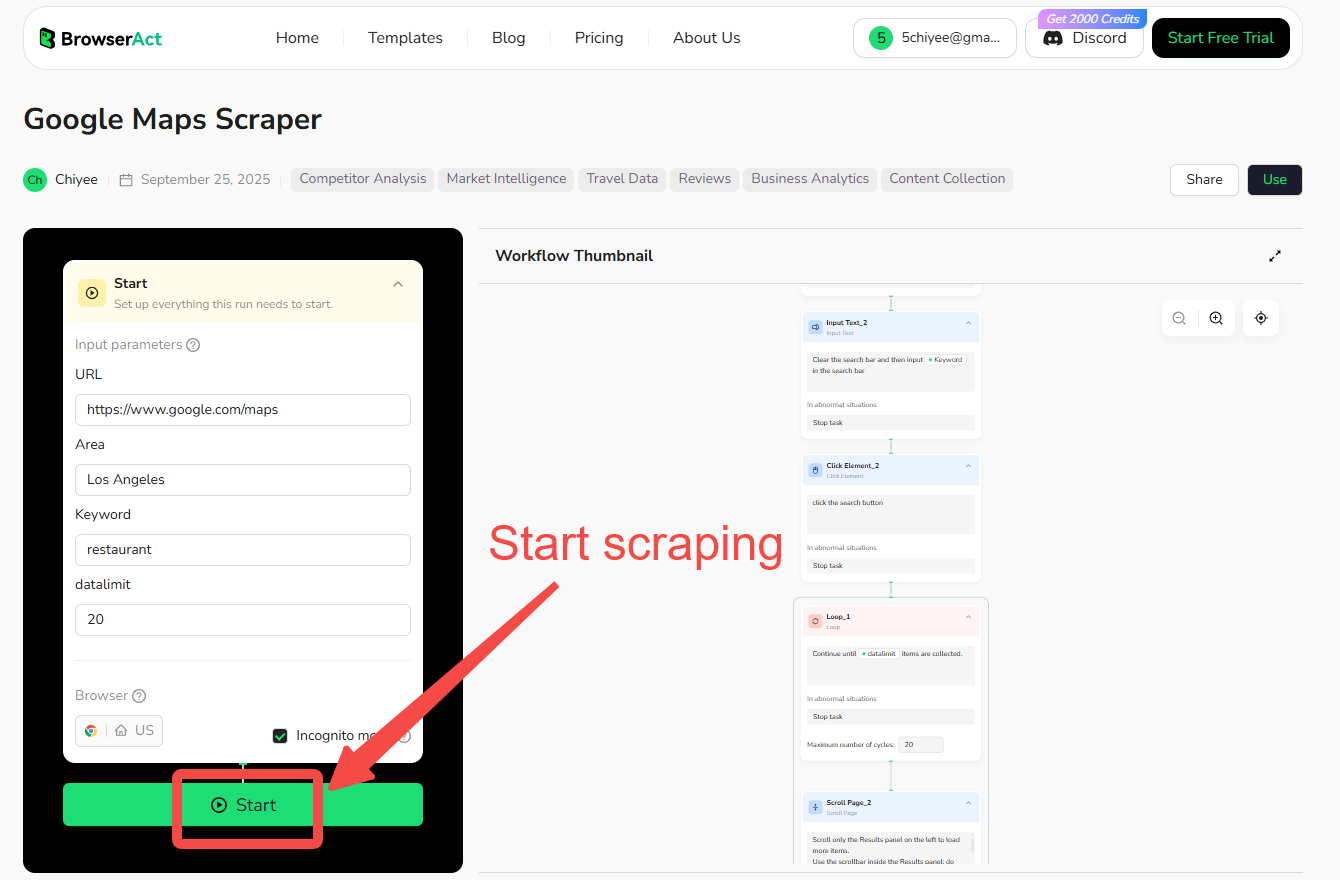
Google Maps Scraper
BrowserAct Google Maps Scraper is a powerful, no-code tool that automates scraping Google Maps for business names, addresses, ratings, reviews, and more to easily find local business data, allowing you to scrape Google Maps business data effortlessly without manual effort. It solves the exhaustion of manually compiling data from countless search results, enabling sellers, marketers, researchers, and analysts to uncover business leads, monitor ratings, analyze reviews, and gain a competitive edge through automated Google Maps data extraction.
Purpose of Google Maps Scraper
Key Benefits of Using Google Maps Scraper
This Google Maps data scraper helps you automate the extraction of local business information to drive informed decisions. Here's what it delivers:
- Streamline Data Collection: Effortlessly gather business details like addresses, ratings, and reviews from targeted areas and categories, eliminating manual searches and saving valuable time.
- Uncover Local Insights: Discover high-rated businesses and emerging trends on Google Maps by pulling structured data such as star ratings and review counts across various locations and search terms.
- Gain Competitive Intelligence: Achieve an edge with AI-powered features, including smart field recommendations for scraping unique data not found in standard Google Maps tools.
- Enable In-Depth Analysis: Perform accurate assessments of ratings, prices, and customer feedback using customizable extraction, functioning as a versatile Google Maps rating scraper or review analyzer.
- Drive Business Expansion: Enhance lead generation and market strategies by converting raw Google Maps data into practical reports for identifying promising local opportunities.
Who Should Use This Google Maps Scraper?
- Local Business Owners: Ideal for scouting competitors, tracking local ratings, and identifying growth areas in specific neighborhoods.
- Marketers and SEO Specialists: Perfect for generating leads, analyzing review trends, and optimizing local campaigns with data from Google Maps searches.
- Market Researchers: Great for studying regional business patterns, customer sentiments, and demographic insights across different locations.
- Sales and Lead Generation Teams: Useful for bulk scraping to build contact lists, monitor pricing, and forecast opportunities in targeted markets.
Skill Requirements: No coding needed – just basic knowledge of web browsing to set up and run.
Usage Scenarios: Use it for lead prospecting, competitor benchmarking, local market analysis, or compiling reports for strategic planning.
Google Maps Scraper Inputs, Outputs, and Capabilities
Input Parameters for Effective Google Maps Scraping
Detailed explanation of required input parameters, presented in a table for clarity:
Parameter | Required | Description | Example Value |
URL | Yes | The base URL for Google Maps (do not change this). | |
Area | Yes | The location or area to search in Google Maps (e.g., "Los Angeles"; you can modify to others like "New York" for different regions). | "Los Angeles" |
Keyword | Yes | The search category or keyword to scrape results for (e.g., "restaurant"; you can modify to others like "hotels" for different categories). | "restaurant" |
DataLimit | Yes | The maximum number of business items to collect (e.g., 20; adjust based on needs for larger datasets). | 20 |
These parameters allow for reusable setups and quick adjustments, making your Google Maps Scraper workflow adaptable to different tasks.
Output Data from Scraping Google Maps
Explanation of the workflow's output data format and content:
Data fields include:
- Name: Captures the business name for identification.
- Full Address: Records the address in a formatted string like "Street, City, State/Province, Postal Code, Country".
- Star Rating: Formats the average rating as X.X/5.0 for quality assessment.
- Review Count: Counts the total reviews as integers only.
- Average Price Per Person (Range): Extracts the price range as "min--max" (numbers only, no currency symbols); missing data as "N/A".
If you want more output data (e.g., phone numbers or websites), you can customize the workflow to include them. Output supported formats: JSON, CSV, Excel, XML, ideal for easy download and integration after you scrape Google Maps.
Scope and Limitations of the Google Maps Scraper
- Supported Websites/Platforms: Specifically designed for Google Maps search results pages, supporting location-based lists and business rankings to scrape Google Maps.
- Data Types: Structured business data, including names, addresses, ratings, reviews, and price ranges via a Google Maps data scraper.
- Data Scale: Suitable for small-scale (dozens of businesses) to large-scale (hundreds) Google Maps scraping, depending on credit usage.
How to Build Your Google Maps Scraper Workflow: Step-by-Step
Step 1: Parameter Setup
- URL: "https://www.google.com/maps".
- Area: Google Maps search area (default: "Los Angeles"; you can modify to others like "New York").
- Keyword: Search category (default: "restaurant"; you can modify to others like "hotels").
- DataLimit: Maximum items to collect (default: 20; adjust for more data).
Input Parameters:
- url: "https://www.google.com/maps"
- area: "Los Angeles"
- keyword: "restaurant"
- datalimit: 20
Use default values for quick runs, such as keeping Area as "Los Angeles" for testing without manual changes.

Step 2: Search & Navigation
- Visit Page Prompt: Visit /URL – This opens the Google Maps website to start the scraping process.
- Input Prompt: Input /Area in the search bar – This sets the desired location or city for the search, narrowing down results to a specific geographic area.
- Click Element Prompt: Click the search button – This submits the area input to load the map and initial results for that location.
- Input Prompt: Clear the search bar and then input /Keyword in the search bar – This clears the previous input and adds the specific category or keyword (e.g., "restaurant" or "hotel") to refine the search within the selected area.
- Click Element Prompt: Click the search button – This executes the keyword search to display a list of relevant businesses in the chosen location.

Step 3: Loop and Collect Data
Loop Action: Continue until /DataLimit items are collected.
Note: The loop's maximum number of cycles is set to 20 by default; you can adjust this based on your DataLimit (e.g., for larger limits like 100, increase cycles accordingly). Higher DataLimit means more cycles and longer runtime.
Inside Loop:
- Scroll Prompt: Scroll only the Results panel on the left to load more items. Use the scrollbar inside the Results panel; do not scroll the map or the whole page. Perform one screenful scroll down, wait 1–2 seconds for new results to load, then proceed.
- Extract Data: Extract from first /DataLimit businesses: Name, Full Address, Star Rating, Review Count, Average Price Per Person (Range).

Step 4: Data Export
- Output Setup: Add "Finish: Output Data" action, select CSV format, and enable "Output as a file" for direct download.

- Publish and Run: Click "Publish" to save, then go to "Run" section, adjust parameters if needed, and click "Start".
- Download Results: Once complete, download the CSV file with your scraped Google Maps data.
Quick Start Guide: How to Use Google Maps Scraper in One Click
If you don't want to build the workflow from scratch, simply use our pre-built "Google Maps Scraper" template for instant setup and start scraping Google Maps effortlessly.
- Register Account: Create a free BrowserAct account using your email.
- Configure Parameters: Fill in necessary inputs like Area (e.g., "Los Angeles") – or use defaults to learn how to scrape Google Maps quickly.
- Start Execution: Click "Start" to run the workflow.
- Download Data: Once complete, download the results file from scraping Google Maps.

Common Scenarios for Using Google Maps Scraper
Business Use Cases for Scraping Google Maps Data
- Lead Generation: Use the Google Maps scraper to find businesses on Google Maps for outreach and sales planning.
- Rating Monitoring: Scrape Google Maps as a Google Maps rating scraper for competitors' reviews and feedback.
- Review Analysis: Extract data with the Google Maps review scraper to analyze star ratings and counts.
- Market Insights: Identify Google Maps business data to evaluate trends and opportunities.
Technical Integrations for Advanced Google Maps Scraping
- API Calls: Integrate via API into third-party automation platforms like Make or n8n for seamless Google Maps scraping.
- Scheduled Tasks: Set up regular runs to automate reports on how to scrape Google Maps.
- Data Pipelines: Connect with analysis tools (e.g., Google Sheets or BI software) for ongoing data flow.
Get Started with Scraping Google Maps Now
🚀 Start using it today!
- Create Free Account - 30-second quick registration
- Try This Workflow - Free trial
Custom Google Maps Scraper Solutions
💡 Need a customized workflow?
If the existing Google Maps Scraper doesn't fully meet your needs, we offer custom development services:
📧 Email Contact: service@browseract.com
💬 Discord Community: Join our Discord
